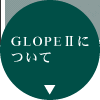予定表 -詳細情報-
| 件名 | WS 糟谷祐介氏 |
| 開始日時 | 2012年 7月 5日 (木曜日) 16時30分 (GMT+09:00) |
| 終了日時 | 2012年 7月 5日 (木曜日) 18時00分 (GMT+09:00) |
| 場所 | 1号館401教室 |
| 詳細 | 木曜セミナー 【報告者】 糟谷祐介(Northwestern University, Kellogg School of Management,MEDS博士課程大学院生) 【タイトル】Anti-bullying School Choice Mechanism Design 【概 要】 The market design approach to school choice has uncovered the desirable properties of the popular mechanisms. However, an educational concern for peer effects, especially the implication of the bullying problems on student assignment has escaped due notice in the literature. This paper first proposes a new framework to study the bullying problems together with school choice. Then it shows that the suitably modified variants of these popular mechanisms have the anti-bullying property (i.e., they systematically separate bullies from their victims, and assign a less preferable school seat to a student if she is involved in an additional bullying episode as a bully) together with other standard desiderata. Finally, by investigating the complementary roles of the market design and anti-bullying program, I discuss the interwoven future perspective of the collaboration between the two fields. この研究は,学校選択のメカニズムにおいて、いじめ問題を取り入れた新しい分析を提案している。既存のメカニズムを修正することにより、いじめ問題にも対応したメカニズムができることを示す。糟谷祐介氏はノースウエスタン大学の博士課程2年の学生であり、この分野の研究を精力的に進めており、今回の帰日の機会に報告をしていただく。 |
| カテゴリー | ワークショップ・セミナー |








